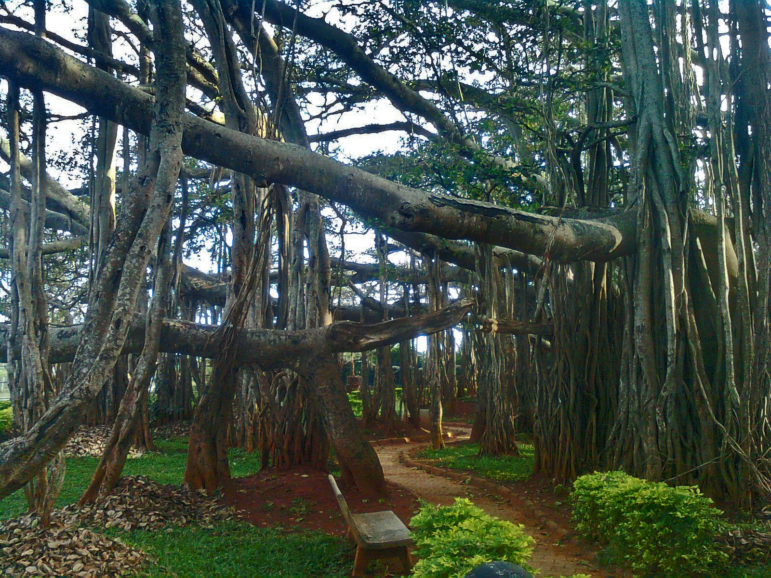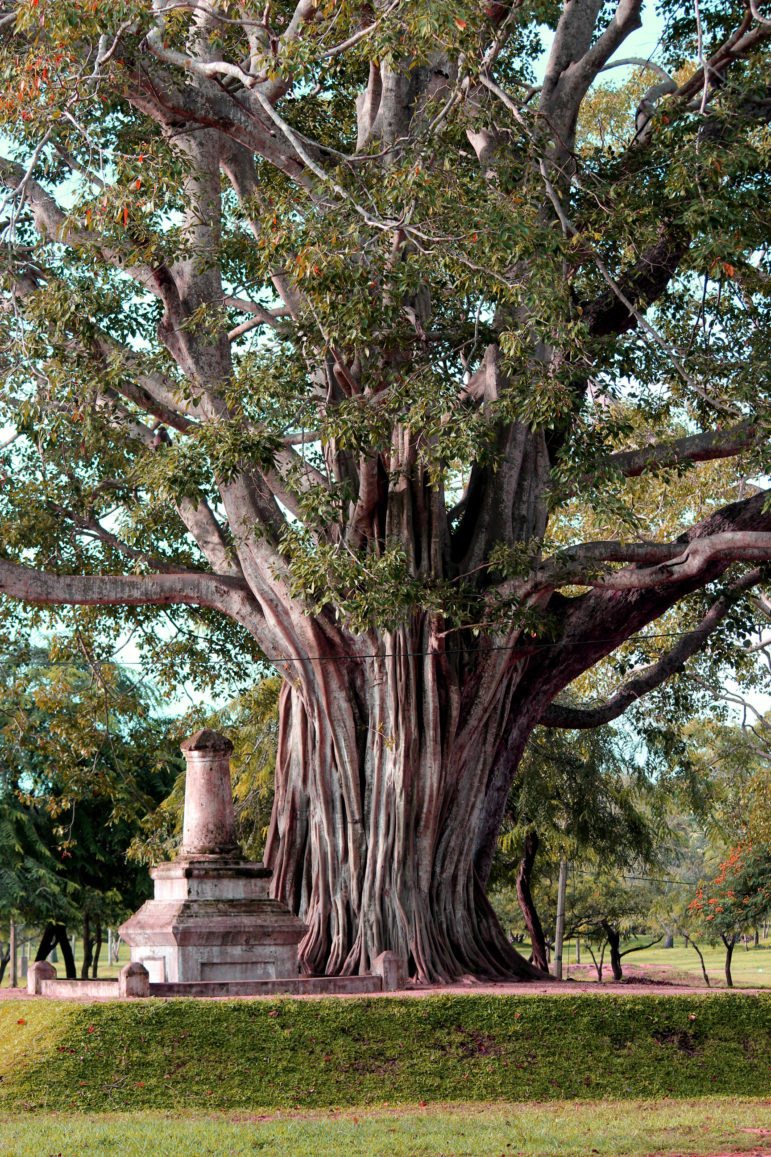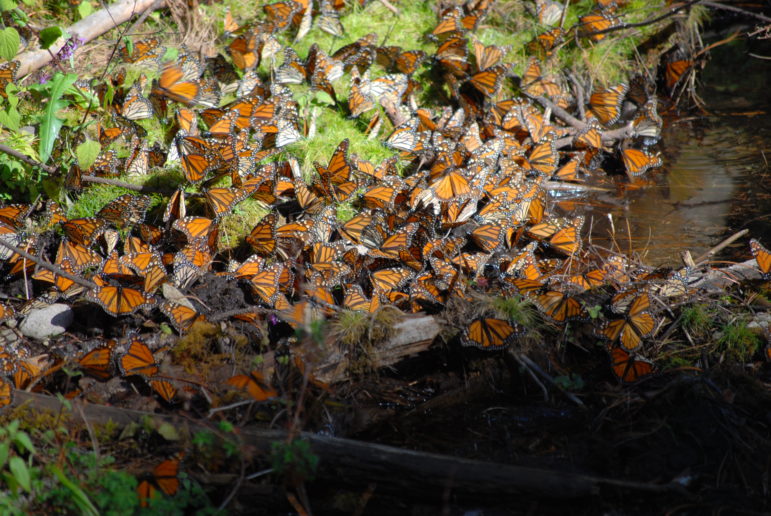TWH – While the fight to preserve and save places like “Chi’chil Bildagoteel” (the Apache name for Oak Flat) in the U.S. continues, in other places in the world there seems to be the rise of a new trend.
Over the course of the past decade, there has been an increasing call for the incorporation of religion and faith into the efforts of conservation and biodiversity. While this approach is not new, it seems to be gaining more traction as of late, and there have been a number of articles in the mainstream media recently.

Large banyan tree at Bangalore (2010) – Image credit: Kiran Gopi – CC BY-SA 2.5
Last July, BBC Future published a story about the sacred groves across India that are being saved due to their connection with the Hindu faith. The deity, Pallalamma Devi is considered to be a nature goddess, and to honor her, protecting the groves of two types of Ficus trees that are found throughout the Indian subcontinent reflects an act of devotion.
Lakshman Acharya, priest of the Pallalamma temple explains, “It’s something which is ingrained into every Hindu worshipper: temples, trees and ponds are all meant to be a collective space of worship.”
The banyan tree (Ficus benghalensis) is one the largest trees in the world with the largest of its species found in Andhra Pradesh, India. The peepal tree (Ficus religiosa) is the longest-lived of the two species with a range of 900 to 1500 years, compared to the banyan which ranges between 250 to 500 years. The oldest banyan is over 550 years old, and the oldest peepal found in Anuradhapura, Sri Lanka is believed to be between 2,250 and 2,600 years old.
The peepal tree is also known as the bodhi tree and is considered sacred by Buddhists.
As a result of the trees being considered sacred, anywhere from 100,00 to 150,000 groves of these trees across India are preserved, which provides a safe haven for a variety of wildlife ensuring biodiversity. Spiritual practices and religious beliefs form the foundations for conservation, even as India continues to lose its forests at an increasingly alarming rate.
The intersection between faith practices and the environment provides fertile ground for protecting what is often seen as a symbol of prosperity and protection for not just Hindus and Buddhists, but even some Muslims who make offerings to the forest goddess Bonbibi for protection.
Groups like Applied Environmental Research Foundation (AERF) are working in partnership with a variety of communities to promote conservation and sustainability by tapping into cultural and religious practices and offering new ways for communities to profit when they focus on preservation.

A peepal or bodhi tree in Anuradhapura – Image credit: Nishara chathuranga – CC BY-SA 4.0
While tribes like the Gharo and Khasi protect their sacred groves in the northeastern regions of India, other communities see forests as merely a source of wood. AERF has worked to change that by incentivizing conservation by offering alternatives that revolve around harvesting a variety of botanicals that have high value in other markets.
Efforts like these when coupled with spiritual practices can be a powerful motivation for the conservation and preserving the biodiversity that is essential to maintaining some balance in a changing climate.
Similar efforts in places like Mexico, which is home to the wintering Monarch butterfly have proven effective in preserving the Monarch’s diminishing habitat. Turning villagers away from cutting the trees essential to the butterfly’s survival, and instead offering them opportunities to benefit financially from the flittering migration has had a positive impact on conservation.
To many of the people of Mexico, the Monarch has a connection to the ancestors due to its returning migration occurring during el Día de los Muertos (The Day of the Dead), and represents loved ones who have died but have returned to visit. Combining spiritual beliefs with financial incentives when it comes to conservation has the potential to help shift practices in ways that support rather than undermine the environment.

Monarch butterflies along the bank of a stream at the Cerro Prieto Sanctuary in the Sierra Chincua, Michoacan – Image credit: AlejandroLinaresGarcia – CC BY-SA 4.0
West African communities in Guinea-Bissau, Senegal, and Liberia are other examples of people stepping up to protect the places they believe are sacred. While some of the sacred forests are reserved for spiritual rites and entering them is prohibited except for ceremonies, some are home to the members of the communities that often live within the forests’ domain, rather than separate from it.
The traditions that are at the core of protecting these wild places date far back in history and have been passed down from generation to generation from time immemorial. And it’s not just forests that are protected by these spiritual practices and beliefs.
The lagoons, like the one in Barconie, Liberia, are considered to be a sacred place and as a result, its fish and the mangroves surrounding it are protected. According to the town chairman, Alphonso Dennis, “All of the fish that you see in the water there, they are all the people in the community. They are the children of the community. That’s how we were taught. If you kill one of those fish, someone in the community will be affected.”
In the southern forests of Senegal, women like Diakine Sambou function as guardians for their forests. Sambou has overseen the safety of the forest in the Casamance region and functions as a conduit between the forest and the people of the community.
“It’s a strong relationship,” Sambou said. “We don’t do anything without nature’s permission, and if you don’t take care of the trees, the environment will remind you of what you have done. No one enters the sacred forest to cut down the trees there, never, never. It’s sacred.”
While religion and spiritual practices and their connection to nature and wild places are not new, the increasing interest in how these intersections might be used to help further encourage conservation is.
The United Nations and academics have periodically pointed out the importance of religious practices when it comes to the environment. As the dangers to the environment continue to grow, the examples of these connections and how they can be utilized to promote conservation will very likely become more frequent and urgent.
The Wild Hunt is not responsible for links to external content.
To join a conversation on this post:
Visit our The Wild Hunt subreddit! Point your favorite browser to https://www.reddit.com/r/The_Wild_Hunt_News/, then click “JOIN”. Make sure to click the bell, too, to be notified of new articles posted to our subreddit.